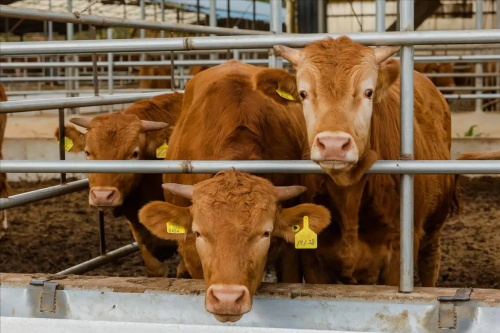Optimizing Bovine IVF: A Guide to Selecting the Right OPU Equipment for Your Lab
Meta Description: Elevate your bovine IVF success rates. Discover how to choose specialized Bovine OPU equipment for enhanced oocyte recovery, improved lab efficiency, and superior embryo production.
(Image Suggestion: A high-quality, professional photo of a veterinarian performing an OPU procedure on a cow with the ultrasound machine and monitor clearly visible.)
The pursuit of genetic excellence in the global cattle industry has never been more advanced. At the heart of this progress is Bovine In Vitro Fertilization (IVF), a technology that allows top-tier female donors to produce a remarkable number of embryos. However, the entire IVF pipeline hinges on a single, critical first step: Ovum Pick-Up (OPU).
The efficiency and success of OPU are directly dependent on the equipment used. For IVF labs and large-scale breeding operations, investing in the right Bovine OPU equipment is not just a purchase—it’s a strategic decision that impacts genetic gain, profitability, and reputation.

This guide delves into the key components of a modern OPU system and what to look for when selecting equipment that delivers a superior return on investment.
1. The Ultrasound Scanner: The Eyes of the Procedure
The ultrasound machine is the cornerstone of any OPU setup. It’s what allows the operator to visualize the ovaries and guide the needle to the follicles accurately.
High Frequency is Key: Look for linear array transducers with a frequency of 7.5 MHz or higher. Higher frequency provides superior resolution, allowing for clear visualization of even small (2-5 mm) follicles, which are crucial for maximizing oocyte yield.
Durability and Ergonomics: The transducer must be built to withstand the rigors of daily use in a clinical setting. An ergonomic design reduces operator fatigue during lengthy procedures, ensuring consistent performance.
Image Clarity and Depth Adjustment: A high-resolution monitor and the ability to easily adjust depth and gain are essential for precise needle guidance, minimizing trauma to the ovarian tissue.
2. The OPU Needle: Precision at the Point of Collection
The needle is the direct interface with the donor’s follicles. Its design directly influences oocyte recovery rate and quality.
Bevelled Tip Design: A specially engineered, sharp bevelled tip allows for smooth penetration of the follicle wall with minimal resistance. This reduces the chances of oocyte damage during aspiration.
Consistent Gauge and Length: Standard 17- or 18-gauge needles offer an ideal balance between flow rate and tissue trauma. The length must be compatible with the guide attached to the transducer.
Surface Smoothness: Internally polished needles prevent oocytes from sticking to the surface, ensuring they are efficiently transported into the collection system.
3. The Pump System: Controlled and Gentle Aspiration
The vacuum pump is the engine of the OPU process. It provides the suction needed to draw the follicular fluid and oocytes out of the follicle.
Precise Vacuum Control: The pump must offer stable and adjustable vacuum pressure, typically in the range of 70 đến 100 mmHg. Precise digital controls are far superior to analog gauges, allowing for repeatable settings.
Pulsatile vs. Continuous Flow: While continuous flow is standard, some advanced systems offer a pulsatile (on/off) vacuum option. This can mimic natural processes and may help in dislodging oocytes that are tightly attached to the follicle wall, potentially increasing recovery rates.
Hygiene and Maintenance: A system designed for easy cleaning and sterilization between procedures is non-negotiable for maintaining aseptic conditions and preventing cross-contamination.
4. The Collection System: Safeguarding Valuable Oocytes
This is where the harvested oocytes are collected. A well-designed system minimizes stress on the oocytes from the moment they are aspirated.
Temperature-Controlled Tubes: Using pre-warmed collection tubes (e.g., 38.5°C) is critical to avoid thermal shock to the sensitive cumulus-oocyte-complexes (COCs).
Efficient Filtration: The setup often includes a filter that separates the oocytes from the follicular fluid and blood cells, making it easier for the embryologist to identify them under the stereomicroscope immediately after the procedure.
Closed Systems: Closed collection systems are preferred as they reduce the risk of airborne contamination during the transfer of samples to the lab.
Why Investing in Specialized Bovine OPU Equipment Matters
Using repurposed human medical equipment or outdated technology is a false economy. Specialized Bovine OPU equipment is engineered for the unique anatomy of cattle and the specific challenges of a farm or lab environment.
The direct benefits include:
Higher Oocyte Yield per Session: Clear visualization and efficient aspiration mean fewer oocytes are left behind.
Improved Oocyte Quality: Gentle handling and controlled conditions result in healthier oocytes, leading to better fertilization and blastocyst rates.
Enhanced Donor Welfare and Repeatability: Precise equipment minimizes tissue damage, allowing for more frequent OPU sessions from valuable donors without compromising their health.
Increased Lab Throughput and Profitability: Reliable, efficient equipment allows you to process more donors effectively, maximizing the output of your IVF lab.
Kết thúc: Partnering for Progress
Selecting the right Bovine OPU equipment for your IVF lab is a foundational step toward achieving excellence in bovine embryo production. It’s an investment that pays dividends in the form of superior genetics, operational efficiency, and a stronger position in the competitive livestock market.
When evaluating suppliers, look for partners who offer not just hardware, but comprehensive support, training, and a deep understanding of animal reproduction science.
Ready to transform your bovine IVF outcomes? Contact us today to discuss our range of high-performance, veterinary-specific OPU systems designed to meet the rigorous demands of modern genetics programs.